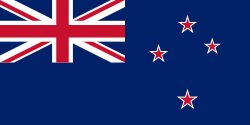New Zealand
Circumcision in New Zealand
The incidence of male neonatal non-therapeutic medically unnecessary circumcision in New Zealand among white New Zealanders rose to about 95 percent in the 1940s. The incidence of male neonatal non-therapeutic circumcision started to decline about 1950. The decline seems to have been triggered by the publication of Douglas Gairdner's classic 1949 paper, The Fate of the Foreskin: A Study of Circumcision.[1]
Dr Phil Silva reported that 40.3 percent of boys born in 1972-3 in the Dunedin Multidisciplinary Health and Development Study were circumcised.
The incidence of circumcision was reported at 0.35 percent among New Zealander boys in 1995.[2]
The New Zealand Medical Association estimated in 2001 that about one percent of Caucasian boys were being circumcised, but nearly 100 percent of Tongan, Samoan, and Jewish boys are being circumcised.[3] Health New Zealand does not fund non-therapeutic circumcision.[4]
Four medical groups condemned the practice of non-therapeutic circumcision of children in 2002.[5]
The Royal Australasian College of Physicians (RACP) has issued a statement on non-therapeutic child circumcision. (Australasia includes New Zealand.) The statement (2010) states:
After reviewing the currently available evidence, the RACP believes that the frequency of diseases modifiable by circumcision, the level of protection offered by circumcision and the complication rates of circumcision do not warrant routine infant circumcision in Australia and New Zealand. However it is reasonable for parents to weigh the benefits and risks of circumcision and to make the decision whether or not to circumcise their sons.
But the statement also says:
The option of leaving circumcision until later, when the boy is old enough to make a decision for himself does need to be raised with parents and considered. This option has recently been recommended by the Royal Dutch Medical Association. The ethical merit of this option is that it seeks to respect the child’s physical integrity, and capacity for autonomy by leaving the options open for him to make his own autonomous choice in the future. However, deferring the decision may not always be the best option. As noted earlier, the psychosocial benefits of circumcision (e.g. full inclusion in a religious community) may only be obtained if circumcision is done in infancy. Waiting until the boy is twelve years old or more (i.e. old enough to make his own decision) may mean losing benefits that circumcision was intended to produce.[6]
Demographics and distribution
The males in New Zealand who are circumcised are mostly older men. The percentage of males who are circumcised is gradually declining as older circumcised males die off and are replaced by younger intact males. Almost no white males under 35-years-of-age are circumcised.
The Maori people, who constitute about 17 percent of the population, do not circumcise.[2]
It is said that the small Jewish population have to fly in a mohel if they want to have a son circumcised.[2]
The Pacific Island people, who constitute 8.1 percent of the population, are an exception. The Pacific Islanders circumcise (actually a dorsal slit) as part of their culture.[4] [7]
There is now an abundant majority of foreskinned males in New Zealand.[8] The World Health Organization reported in 2007 that fewer than 20 percent of males are circumcised.
Intactivist website
New Zealand is the home of Circumstitions - The Intactivism Pages.
See also
External links
- Wikipedia article: New Zealand
- Young H. & McGrath, K. (8 December 2000).
The rise and fall of circumcision in New Zealand
, Circumstitions. Retrieved 1 January 2020. - Watson, Lindsay R.. The universal condition: Medical constructions of 'congenital phimosis' in twentieth century Nev Zealand and their implications for child rearing. Health History. 2014; 16(1): 87-106. PMID. DOI. Retrieved 14 May 2022.
-
Intactivists of Australasia
. Retrieved 17 November 2019. - Solomon, Serena (28 August 2023).
'Aggressive' circumcisions ruined the lives of these men
, Stuff. Retrieved 20 September 2023. - Alissa, Kristel (23 February 2025).
Cultures That Reject Circumcision—And Why They’re Right
, Intact America. Retrieved 8 May 2025.
References
- ↑ Gairdner DMT. The fate of the foreskin: a study of circumcision. British Medical Journal. 1949; 2(4642): 1433-7. PMID. PMC. DOI. Retrieved 28 October 2019.
- ↑ a b c McGrath, Ken, Young, Hugh (2001):
Review of Circumcision in New Zealand
, in: A Understanding Circumcision: A Multi-Disciplinary Approach to a Multi-Dimensional Problem. George C. Denniston, Frederick M. Hodges, Marilyn Fayre Milos (eds.). New York: Kluwer Academic/Plenum Publishers. Pp. 129-146. ISBN 978-0306467011. Retrieved 27 September 2019. - ↑ Bone, Alistair (17 November 2001)."The First Cut", The Listener. Retrieved 24 January 2020.
- ↑ a b Afsari, Mahnaz, Beasley, Spencer W., Moate, Kiki, Hecket, Karen. Attitudes of Pacific parents to circumcision of boys. Pac Health Dialog. March 2002; 9(1): 29-31. PMID. Retrieved 8 November 2021.
- ↑ Anonymous (30 August 2002)."Quick snip' an unkind cut", The Dominion Post. Retrieved 28 October 2019.
Quote:They say circumcision is painful, risky and often medically unnecessary.
- ↑ Circumcision of Infant Males , Royal Australasian College of Physicians. (1 September 2010). Retrieved 29 October 2019.
- ↑ Martin, Yvonne (13 January 2001)."Foreskin lament for babies", The Press. Retrieved 28 October 2019.
- ↑ Anonymous (27 May 2025).
33 born in NZ mixed Māori/Euro Experience growing up
, REDDIT. Retrieved 29 May 2025.
